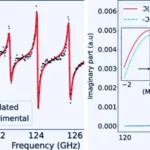Key Points
- MIT researchers developed an efficient algorithm, MBTL, to enhance reinforcement learning models for complex tasks with variability.
- The algorithm selects a subset of impactful tasks, optimizing overall performance while reducing training costs.
- MBTL is five to 50 times more efficient than standard methods, requiring less data and computation.
- Researchers aim to extend MBTL to high-dimensional task spaces and apply it to mobility and real-world challenges.
Researchers at MIT have developed a novel algorithm to improve the efficiency and reliability of reinforcement learning (RL) models used in AI decision-making systems. The new method addresses challenges AI systems face in adapting to task variability, such as managing traffic in a city with differing intersections. It offers significant efficiency gains over traditional approaches.
AI systems trained with reinforcement learning often struggle when applied to tasks with slight variations from their training data. For instance, a model designed to control traffic lights at one intersection might fail when applied to intersections with different speed limits or traffic patterns. To overcome these limitations, MIT researchers introduced an algorithm that strategically selects the most impactful tasks for training, optimizing the model’s performance across a broader task space.
In scenarios like traffic signal control, each task represents an individual intersection. The algorithm maximizes overall performance while reducing training costs by focusing on a carefully chosen subset of intersections. Known as Model-Based Transfer Learning (MBTL), the algorithm evaluates tasks based on how much they improve the model’s generalization ability across all tasks.
MBTL employs a two-step process: first, it estimates how well the model performs when trained on a single task, and second, it predicts how well the model’s performance will transfer to other tasks. When tested on simulated environments, including traffic signal control and real-time speed advisory systems, MBTL demonstrated remarkable efficiency, outperforming conventional methods by factors of five to 50. For example, MBTL could achieve the same performance as traditional methods while training on data from only two tasks, compared to 100 tasks required by standard approaches.
This method significantly reduces training costs, opening the door to applying reinforcement learning to more complex, real-world problems. Senior author Cathy Wu highlighted the algorithm’s simplicity and practicality, making it accessible for broader adoption. Future plans for MBTL include extending its capabilities to high-dimensional task spaces and applying them to mobility systems and other real-world challenges.
The research, supported by various grants and fellowships, will be presented at the Conference on Neural Information Processing Systems, marking a significant milestone in AI decision-making technology.










